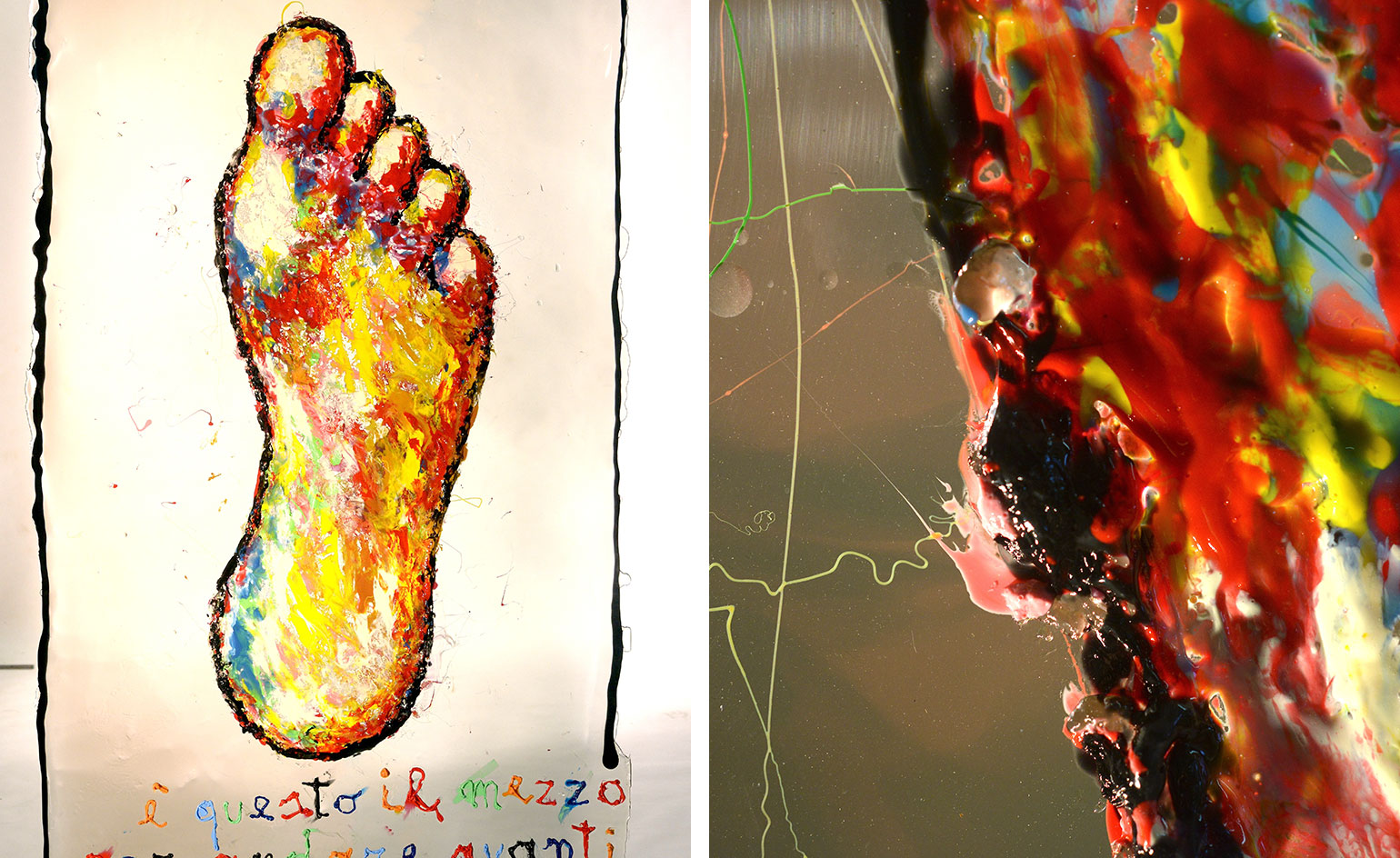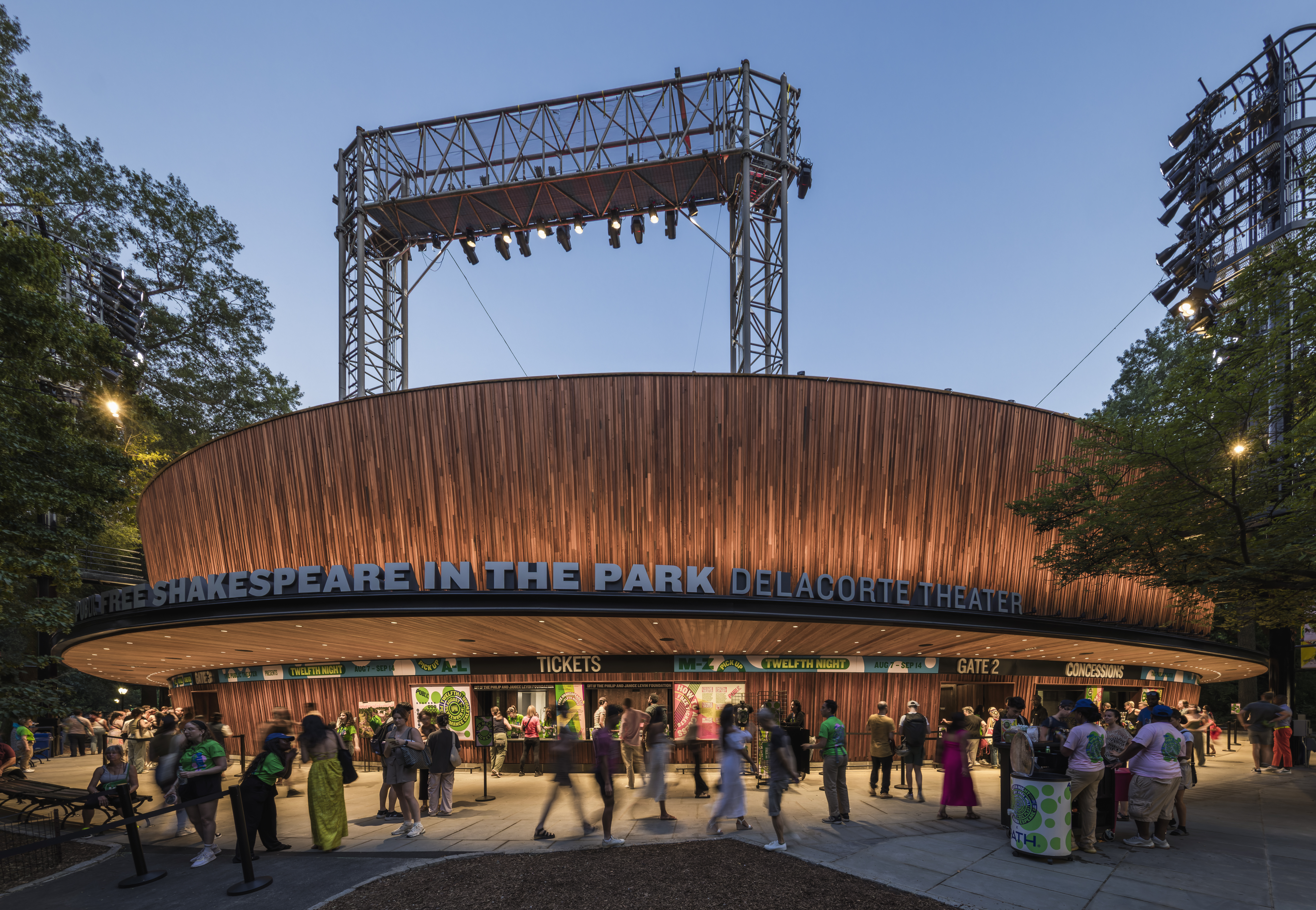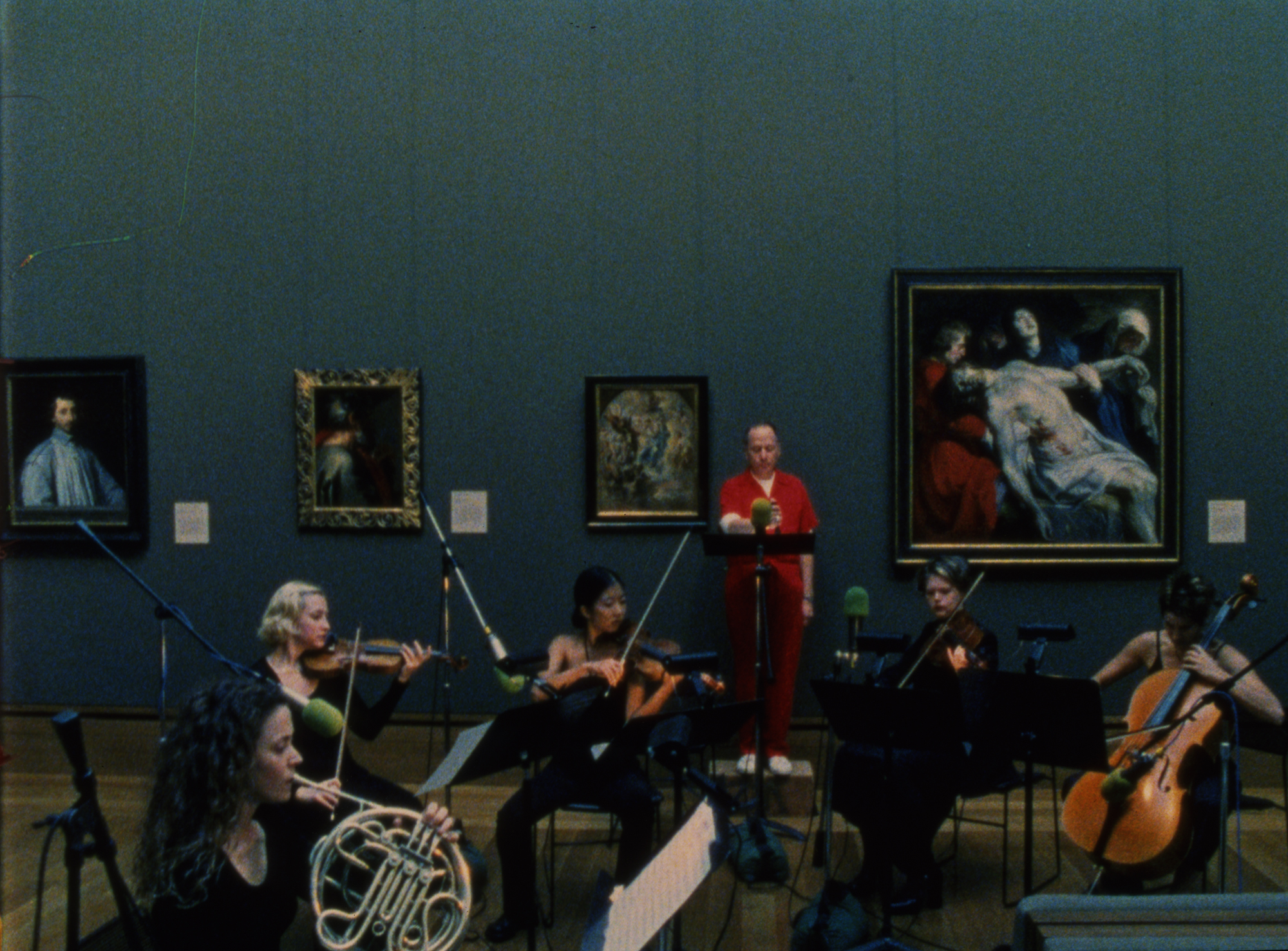Melting moments: MOCA presents a selection of Gaetano Pesce’s resin-based works

When Gaetano Pesce was studying architecture at the University of Venice in the late 1950s and early 60s, he not only participated in the post-Bauhaus art collective Gruppo N, but also worked in the Venetian factories of the Murano glass powerhouses of Moretti, Vistosi and Venini. While the former gave him a formalist and conceptual tool kit (integrating painting, sculpture, architecture and industrial design into a single practice), the latter helped to expand his notions of materiality, and to lay the foundation for his lifelong obsession with resin.
‘What glass and resin have in common is the timing of transformation from liquid to solid and the process of reaction,’ says Pesce, who was also obsessed with the artistic processes found in the culinary world. ‘The kitchen and the art of cooking had a big influence on me and my work with molds. If you think about it, we need small open sky molds to make cookies or cakes, and that’s the same with my works.’
In the early 1980s, when the artist began working with the translucent material, its chemical composition was different than those seen in today’s high-performance resins. ‘It was sensitive to the light. In other words, the light could have changed the transparency, elasticity and solidity of the resin – I can see in my works of 20 years ago that some of their qualities have changed,’ notes Pesce, who created molds for chairs, vases, and lamps – in addition to two-dimensional cast-resin reliefs, which the artist refers to as ‘industrial skins’.
All of these are being exhibited in the four-decade-spanning 'Gaetano Pesce: Molds (Gelati Misti)', at MOCA Pacific Design Center in Los Angeles. The curiosity about Pesce’s processes by curator Bennett Simpson has resulted in a show that examines the narrative behind ‘mass-produced objects where each one has its own quality while differing from each other – the production of the "aleatory" and not standardised series’, says Pesce. ‘Some of the molds are from the 70s when I asked to myself for the first time, "Why objects must be considered alike when people are different?"’
As such, viewers will find examples of vases resembling manicured trees, mangy hirsute mussels and green flames, as well as industrial skins imprinted with images of feet and pregnant mothers, and a red, white and blue prototype chair that would have felt at home in Tommy Hilfiger’s disco-era bell-bottom boutiques.
‘In the exhibition there [are] many vessels because I have dedicated a lot of time and practice in realising these objects. The reason is that I believe they represent something special and important, maybe the most important being the mother’s womb,’ says Pesce, who also considers maternity a prime expression in his iconic doors. ‘This specific part of the feminine body has been a primary element of most of the ancient civilizations, from Mesopotamians to Greeks and Romans, and the Italian Renaissance. This is my contribution to that important branch of art.’

‘What glass and resin have in common is the timing of transformation from liquid to solid and the process of reaction,’ says Pesce, who was also obsessed with the artistic processes found in the culinary world. Pictured: an industrial skin imprinted with an image of a foot titled Il Piede

The qualities of resin have changed significantly since Pesce began working with the material in the early 80s. Pictured: Cara Madre, featuring the form of a pregnant woman

The exhibition also includes a number of Pesce's vases. Pictured: Vase with Hair

Another of Pesce's resin vessels, Vase Albero, is made to resemble a tree

‘In the exhibition there [are] many vessels because I have dedicated a lot of time and practice in realising these objects. The reason is that I believe they represent something special and important,’ says Pesce. Pictured: Green Flame vase

Even the invitations for the exhibition (pictured) were cast in resin form, riffing on the title of the show

A prototype of a resin chair that mixes red, blue and white together

The artist, Gaetano Pesce.
INFORMATION
’Gaetano Pesce: Molds (Gelati Misti)’ is on view from 3 September – 27 November. For more information, visit MOCA’s website
ADDRESS
MOCA Pacific Design Center
8687 Melrose Avenue
West Hollywood, CA 90069
Receive our daily digest of inspiration, escapism and design stories from around the world direct to your inbox.
-
 A compact Scottish home is a 'sunny place,' nestled into its thriving orchard setting
A compact Scottish home is a 'sunny place,' nestled into its thriving orchard settingGrianan (Gaelic for 'sunny place') is a single-storey Scottish home by Cameron Webster Architects set in rural Stirlingshire
-
 7 colours that will define 2026, from rich gold to glacier blue
7 colours that will define 2026, from rich gold to glacier blueThese moody hues, versatile neutrals and vivid shades will shape the new year, according to trend forecasters
-
 In Norway, discover 1000 years of Queer expression in Islamic Art
In Norway, discover 1000 years of Queer expression in Islamic Art'Deviant Ornaments' at the National Museum of Norway examines the far-reaching history of Queer art
-
 Robert Therrien's largest-ever museum show in Los Angeles is enduringly appealing
Robert Therrien's largest-ever museum show in Los Angeles is enduringly appealing'This is a Story' at The Broad unites 120 of Robert Therrien's sculptures, paintings and works on paper
-
 Nadia Lee Cohen distils a distant American memory into an unflinching new photo book
Nadia Lee Cohen distils a distant American memory into an unflinching new photo book‘Holy Ohio’ documents the British photographer and filmmaker’s personal journey as she reconnects with distant family and her earliest American memories
-
 Ed Ruscha’s foray into chocolate is sweet, smart and very American
Ed Ruscha’s foray into chocolate is sweet, smart and very AmericanArt and chocolate combine deliciously in ‘Made in California’, a project from the artist with andSons Chocolatiers
-
 Jamel Shabazz’s photographs are a love letter to Prospect Park
Jamel Shabazz’s photographs are a love letter to Prospect ParkIn a new book, ‘Prospect Park: Photographs of a Brooklyn Oasis, 1980 to 2025’, Jamel Shabazz discovers a warmer side of human nature
-
 The Hammer Museum in Los Angeles launches the seventh iteration of its highly anticipated artist biennial
The Hammer Museum in Los Angeles launches the seventh iteration of its highly anticipated artist biennialOne of the gallery's flagship exhibitions, Made in LA showcases the breadth and depth of the city's contemporary art scene
-
 Thomas Prior’s photography captures the uncanny fragility of American life
Thomas Prior’s photography captures the uncanny fragility of American lifeA new book unites two decades of the photographer’s piercing, uneasy work
-
 Central Park’s revitalised Delacorte Theater gears up for a new future
Central Park’s revitalised Delacorte Theater gears up for a new futureEnnead Architects helmed an ambitious renovation process that has given the New York City cultural landmark a vibrant and more accessible future
-
 Stephen Prina borrows from pop, classical and modern music: now MoMA pays tribute to his performance work
Stephen Prina borrows from pop, classical and modern music: now MoMA pays tribute to his performance work‘Stephen Prina: A Lick and a Promise’ recalls the artist, musician, and composer’s performances, and is presented throughout MoMA. Prina tells us more